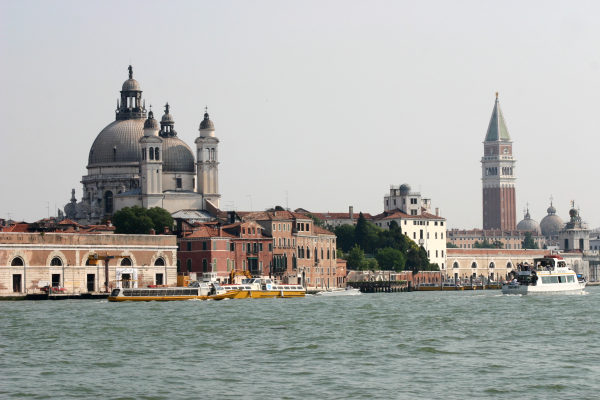Italia Nord, Italia Sud, and the Trains that Unite Them

Italy is a strange and wonderful country. It is at once hopelessly inefficient, exasperating, and unfathomable. Its regions are fiercely independent and culturally alien to each other.
I had lunch with a Venetian recently who suggested that there should be a canal cutting through the center of Florence to dissect Italy from North to South. A neutral zone! The Medici Maginot line! He would fill it with all sorts of aquatic creatures that were not friendly—sharks, piranhas, crocodiles, water moccasins, you name it. He simply felt that Italy would be much happier if it were called Italia Nord and Italia Sud.
Nord would have the Armani, Ferrari, Lamborghini, parmigiano cheese, prosciutto, and Byzantium pieces, you get the picture. The land to the south of this canal, now known as “SOCA,” would get strikes, mozzarella (a good concession), unemployment, Roman ruins, the mafia, and pizza. Fighting words from a Venetian who thrives on his close ties to his Germanic neighbors. But hang on—I thought Italy was unified in 1870? That great big monument, called “Mussolini’s typewriter” or the “Wedding Cake,” stuck in the middle of the Piazza Venetia, is the symbol of Italian unification surely? Well, sort of, but in reality the real symbol of Italian unification is its train network. Tim Parks wrote an amazing book about this called Italian Ways.
Recently on a trip from Rome to Venice, I took the high speed Frecciabianca also known as “the white arrow”! I recall not too long ago that flying between Rome and Venice was a far better way to connect, but the train system has so dramatically changed the landscape of travel in Italy. It took 3 hours and 19 minutes. In addition, you can now connect between Milan and Rome in less than three hours aboard the fastest train of all, the Freccciarossa or “the red arrow.” Hurtling across my Venetian friends’ imaginary border as if in the blink of an eye!
Trains were originally seen as a means to unify the country. Indeed Garibaldi, the liberator of Italy, transported his army on a train. Imagine taking the 11:25 train from Turin to Bologna to conduct a revolution! Only in Italy! Even when it became clear that Italy had no natural resources to fuel its engines, nor steel to build its locomotives, the trains were to be subsidized as a matter of national urgency and pride. Mussolini saw train efficiency as a demonstration of the power and superiority of the new Italy under his Caesar-like rule.
The trains have been running on time pretty much for a hundred years, although they have been losing money for just as long. So, pulling into Santa Lucia station in Venice at exactly 2:25 pm, on time, was a matter of right, not a surprise. Emerging through the station to be greeted by a city awash with vaporetti, gondolier, and palaces that would make any city in the world envious…
Well, that’s just Italy!
Peter Jones is the founder and President of ACIS. Knowing the important difference between a trip that’s mediocre and one that’s extraordinary, he built ACIS from a deep belief and understanding that teachers and students deserve the best—from itinerary development to hotels to perhaps most importantly, the people hired to guide teachers and students throughout the journey.











